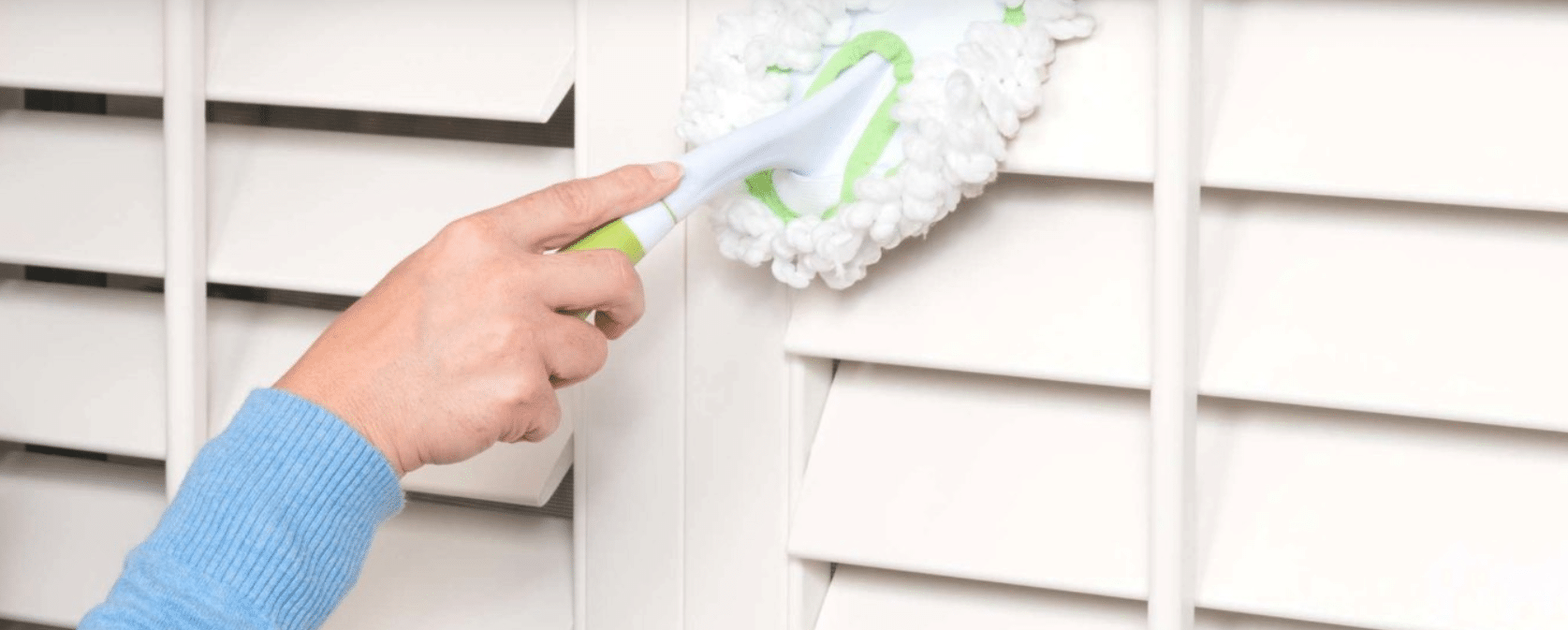Maintaining plantation shutters is straightforward and doesn’t require extensive, ongoing upkeep. For routine cleaning, simply use a duster or a vacuum cleaner with a brush attachment to eliminate dust and dirt. In cases where the shutters are particularly soiled, using a damp cloth is sufficient for removing dirt and grime. To avoid structural and functional problems from day-to-day use, it’s important to open and close your shutters properly and regularly tighten the tension on your louvers.
Remove Dust Regularly
Use a feather duster. For quick dust removal, utilize a feather duster across your shutters, ensuring to clean between each louver and cover both the top and bottom surfaces. In absence of a feather duster, a clean, dry cloth is an effective alternative.
Use a vacuum cleaner brush attachment. For a more comprehensive dust clean-up, use a vacuum cleaner attachment. Use it to meticulously clean the shutters, paying attention to any persistent dirt. Additionally, vacuum the surrounding floor area to collect any dust that might have fallen during the cleaning process.
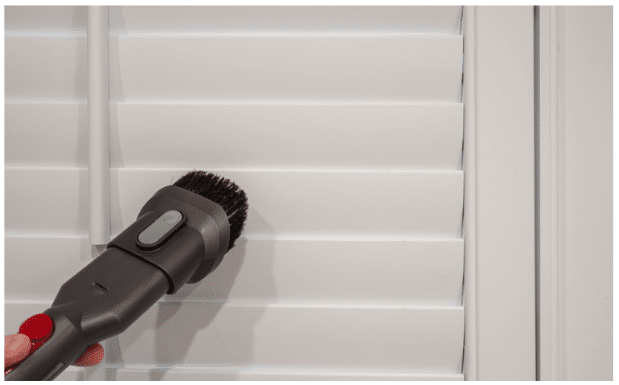
Use a brush vacuum attachment to remove the dust from your shutters
Use a dryer sheet for dust prevention. Dryer sheets are effective in reducing dust adherence on surfaces. After dusting, gently wipe each louver with a dryer sheet. This method not only removes dust but also helps in reducing future accumulation.
Removing Dirt and Grime from Real Wood Shutters
To effectively clean any dirt and grime from your shutters, use a clean cotton sock or cloth. Soak it in a bowl of warm water, then squeeze it until it’s just damp. Gently pass it over each louver of the shutter. If the shutters are extremely dirty, keep an extra sock or cloth handy in case the one in use becomes overly soiled. Wipe each louver as many times as necessary until no new dirt or debris appears on your cotton cloth.
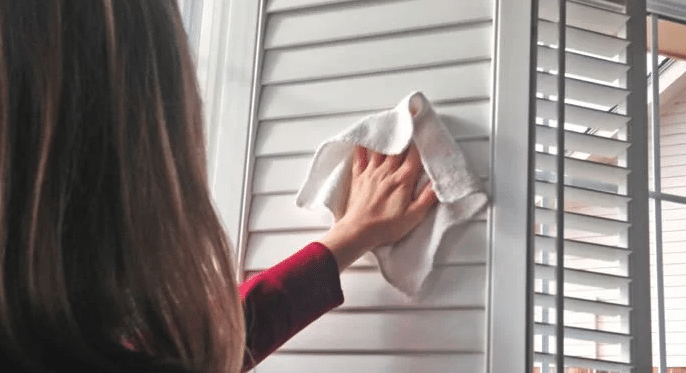
Wipe the dirt and grime with a damp cloth and dry your shutters thoroughly when complete
Once you’ve removed all dirt, grease, and grime, thoroughly dry each part of the shutter that was wiped down. It is imperative that you completely dry any part of the shutter that was exposed to liquid in order to avoid any damage to the paint or warping of the wood.
Opening & Closing Your Shutters Properly
Adjusting louvers: Plantation shutters are designed with adjustable louvers that allow you to control light and privacy. For plantation shutter designed with a tilt rod, which is the vertical bar used for angling the louvers, avoid directly touching the louvers with your hands, as this can weaken the pins that hold them in place and lead to misalignment over time. When adjusting the tilt rod, apply even pressure and move it smoothly without forcing it. This prevents the mechanism from becoming strained and extends the life of your shutters.
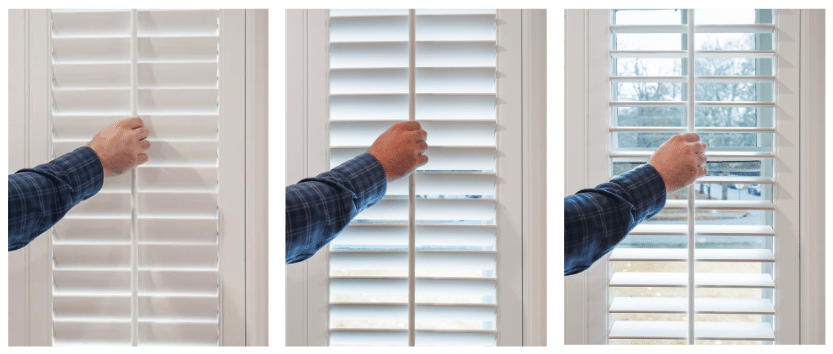
Use the vertical tilt rod to gently open and close your shutters
For plantation shutters designed with a hidden tilt rod (Superview Shutters), you’ll want to move two louvers at once using both hands to adjust the angle of all the louvers. Since all louvers move together, moving two louvers with both hands helps avoid stress and strain on your shutters’ hidden tilt rod.
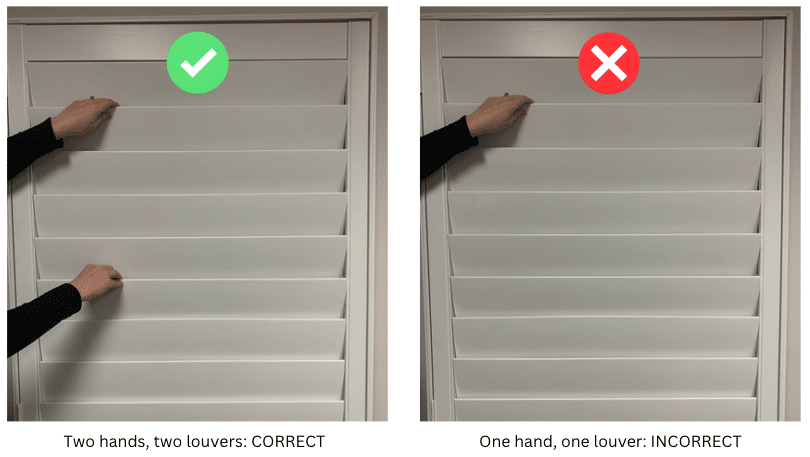
Opening and closing panels: When opening or closing the panels of your shutters, it’s important to do so carefully. Start by gently pulling the panel towards you using the stile, which is the vertical support framing the louvers. Avoid pulling on the louvers or tilt rod as this can cause damage. If your shutters have multiple panels, make sure to open them in sequence rather than all at once to distribute the weight evenly and prevent strain on the hinges. Additionally, ensure that the panels are fully open and the louvers are not obstructed before folding the panels back to avoid bending or snapping the louvers.

Adjusting Louver Tension
Adjusting the louver tension of plantation shutters is an essential task to ensure they function smoothly and stay in the desired position. Over time, the louvers may become loose and not stay open or closed as they should, indicating a need for tension adjustment. The process is straightforward and can be done with a #2 square head screwdriver.
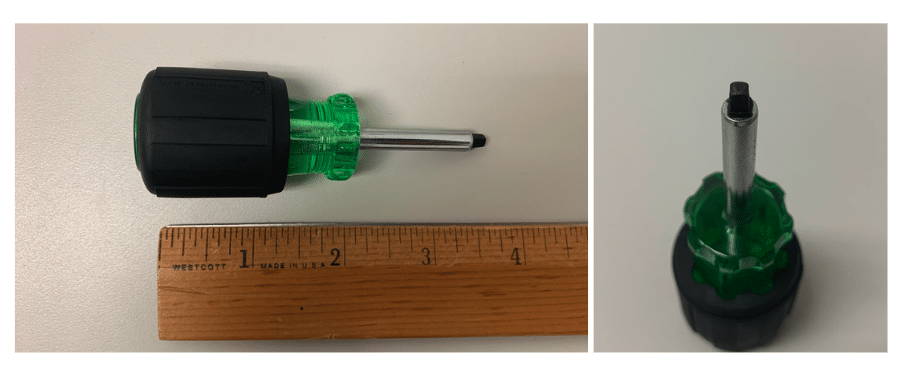
To begin the adjustment, open the plantation shutters to access the side where the tension adjustment screw is located. The screws are found on either side of the shutter panel. It controls the tension of all the louvers within that panel. To tighten the louvers, turn the tension screw clockwise with the #2 square head screwdriver. It’s important to make these adjustments in small increments, as over-tightening can strip the screw or cause damage to the louvers or the shutter frame. Conversely, if the louvers are too tight and difficult to move, you’ll need to turn the screw counterclockwise to loosen them.
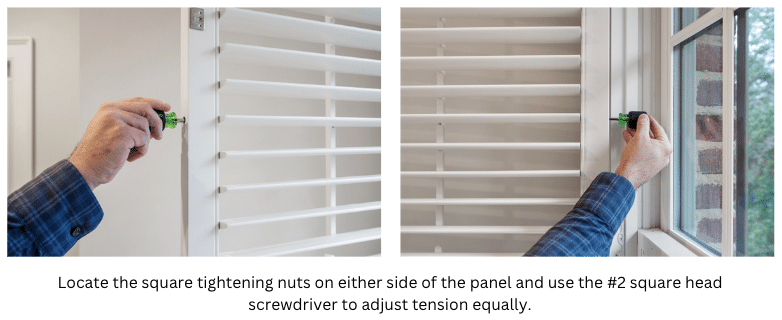
It’s essential to test the tension after each adjustment. The louvers should move smoothly and stay in place when left open at any angle. If they fall shut or flop open, further adjustment is needed. Regularly checking and adjusting the tension of your plantation shutters will maintain their functionality and prolong their lifespan, ensuring they continue to provide beauty and efficiency in your home. Remember, consistent and gentle adjustments are key to maintaining optimal tension without causing undue stress on the shutter mechanism.
